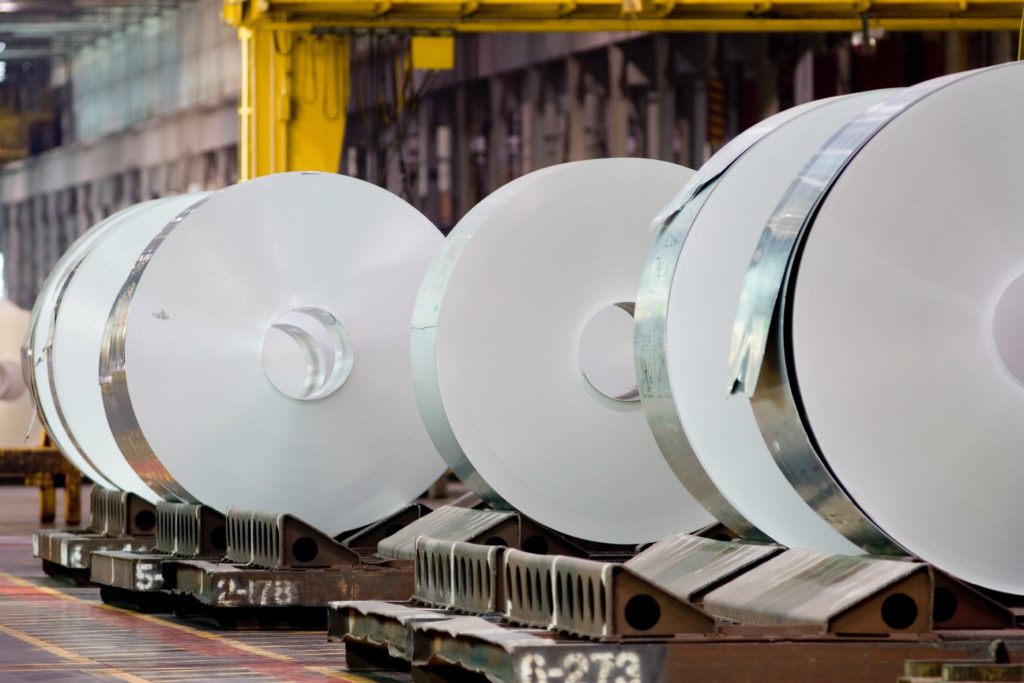
(The opinions expressed here are those of the author, Andy Home, a columnist for Reuters.)
Two more European aluminum smelters are powering down as the region’s energy crisis shows no signs of abating.
Slovenia’s Talum will reduce output to just a fifth of capacity and Alcoa will curtail one line at its Lista plant in Norway.
Close to 1 million tonnes of European primary aluminum capacity is now offline and more may follow as a notoriously power-hungry sector struggles to cope with soaring energy costs.
The aluminum market, however, is unimpressed by Europe’s mounting production woes, the London Metal Exchange (LME) three-month price sank to a 16-month low of $2,295 per tonne on Thursday morning.
A weak global reference price reflects rising Chinese production and growing demand fears for both China and the rest of the world.

But European and US buyers will get only partial relief because physical premiums remain historically high as regional disparities rupture the “all-in” price for their metal.
Aluminum production outside China fell by 1% in the first seven months of this year, according to the International Aluminium Institute (IAI).
Rising output in South America and the Gulf region couldn’t fully offset the accumulating power hits to smelters in Europe and the United States.
Western European production slumped by 11.3% year on year in January to July and annualized run rates are now consistently below the 3 million tonne mark for the first time this century.
North American output dropped 5.1% over the same timeframe and July’s annualized production of 3.6 million tonnes was also the lowest this century.
The sharp slide reflects the full shuttering of Century Aluminum’s Hawesville plant and the partial curtailment of Alcoa’s Warrick plant.
The scale of the collective smelter hit might be expected to at least support the LME outright price.
But losses in Europe and the United States are being more than made up for in China.
China’s smelters collectively reduced annualized run rates by more than 2 million tonnes last year with multiple provinces mandating closures to meet tough new energy targets.
A rolling winter energy crisis has forced Beijing to backtrack for now on its decarbonization drive and aluminum producers have been quick to respond.
Annualized output surged by 4.2 million tonnes over the first seven months of 2022 and is now running at record highs close to 41 million tonnes.
The July closure of up to 1 million tonnes of aluminum capacity in Sichuan province due to drought and power rationing will dent but not halt the surge.
Power rationing in Sichuan also hit downstream aluminum manufacturers, adding to concerns about the state of China’s demand.
Drought, heat waves, structural challenges in the property sector and rolling covid-19 lockdowns have translated into faltering manufacturing activity in the world’s largest aluminum consumer. Official and Caixin purchasing managers indices contracted in August.
The mismatch with surging supply is playing out as it always does in the Chinese aluminum market with surplus metal spilling out in the form of semi-manufactured product exports.
Exports of so-called semis such as bar, rod, wire, and foil hit an all-time monthly high of 619,000 tonnes in July with year-to-date shipments running 29% higher than 2021 levels.
The export wave won’t directly breach trade barriers erected by the United States or Europe but it will have a displacement effect on primary demand everywhere else.
And demand in the rest of the world is now looking decidedly shaky as the impact of high energy prices ripples through the manufacturing chain.
European factory activity contracted for the second consecutive month in July under the weight of high energy prices and a broader slump in consumer confidence.
You can start to see why the aluminum price is falling.
From a global perspective, China’s supply surge outweighs European production cuts and its fast-rising semis exports are flowing into a weakening demand landscape.
Nor do LME time-spreads currently suggest any shortage of accessible metal. Even though exchange inventory is hovering at multi-year lows, the cash premium over three-month metal is subdued at $10 per tonne. It reached $75 per tonne in February when headline stocks were significantly higher.
The key question is not whether there is unseen inventory hanging over the market but where exactly it is being stored.
Both European and US physical premiums have softened over the summer months but remain super high by historical standards.
The CME’s US Midwest premium, for example, has fallen from $880 per tonne over LME cash in February to a current $581 but that’s still higher than the 2015 peak resulting from the controversial load-out queues in the LME’s storage network. So too is the current premium for the duty-paid metal in Europe at just over $500 per tonne.
Both the United States and Europe are natural deficit markets but the gap between local supply and demand is widening this year, meaning higher premiums are needed to attract more units.
Physical premiums in Asia, by contrast, are low and still falling, the CME’s Japanese premium currently trading at a near one-year low of $90 per tonne over LME.

The global premium structure tells you where the surplus is right now, both in terms of accessible primary metal and China’s high semis exports.
It also highlights the current splintering of the all-in aluminum price between the global LME reference points and increasingly divergent regional premiums.
It was this sort of disconnect that caused the LME so much grief during the height of its warehouse load-out problems in the first half of the last decade
Consumers are better able to cope this time around thanks to tradeable premium contracts on both the CME and LME.
Trading activity has been accelerating sharply on both the CME’s US Midwest and European duty-paid contracts, the latter notching up a record 10,107 contracts in July.
More volumes will surely come as regional energy and aluminum production dynamics diverge from the global LME basis price.
(Editing by Edmund Blair)
Comments